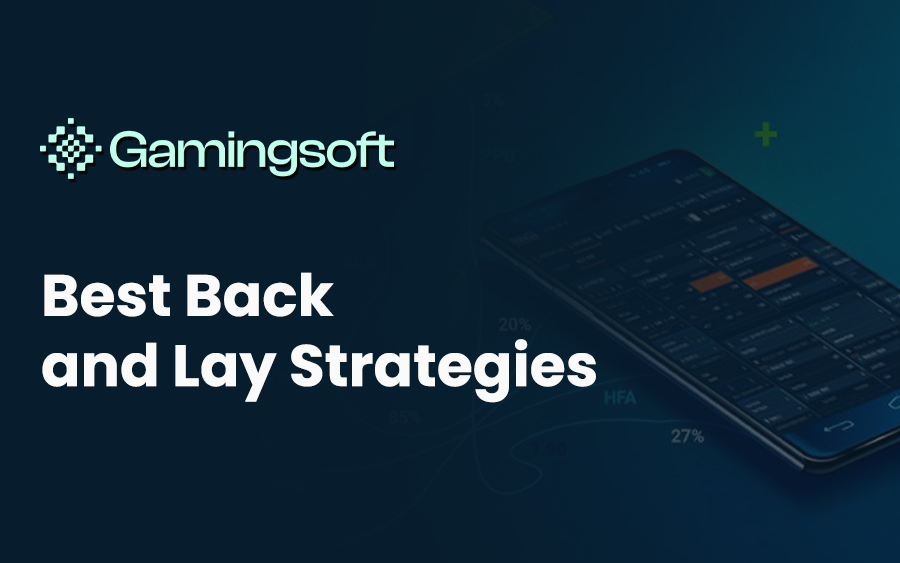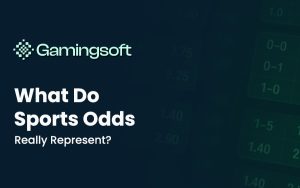While most casual bettors simply back a team and wait, professional traders use strategies that combine both back and lay bets to manage risk, lock in profits, or reduce losses.
For iGaming operators and platform providers, knowing how these strategies work isn’t just trivia — it’s a window into user behavior, liquidity flow, and engagement patterns that can shape your business intelligence tools. So, let’s break down the most popular and practical back and lay strategies, using simple language and real examples.

The Classic “Back-to-Lay” Strategy
This is one of the oldest and most popular techniques among exchange traders.
The idea is simple:
- Back early at higher odds before an event starts.
- Lay later at lower odds when the market moves in your favor.
You’re not betting on who wins — you’re trading on the odds movement.
Example:
- You back Horse A at odds of 6.0 for $10 before the race.
- During the race, Horse A performs well, and the odds drop to 3.0.
- You lay Horse A at odds of 3.0 for $20.
Now you’ve locked in a guaranteed profit, regardless of the race outcome.
Why it works:
You’re trading odds volatility, not outcomes — a concept similar to stock market trading.
For operators:
Back-to-lay traders bring liquidity and dynamic activity to exchanges. Understanding their behavior helps in setting minimum market depth or adjusting real-time odds displays.
The “Lay-to-Back” Strategy
This one flips the logic.
You start by laying a selection early at low odds, expecting the odds to rise later — giving you a better chance to back it at higher odds for profit.
Example:
- You lay Team B at odds of 2.0 with $10 liability before kickoff.
- The match starts, Team B concedes a goal, and odds rise to 3.5.
- You back Team B at 3.5 for $6.
Now, you can balance both bets for a profit if Team B recovers or limit your loss if they don’t.
Why it works:
Markets often overreact to early events — a goal, injury, or momentum shift. Traders who anticipate this can profit from odds correction.
For operators:
Tracking lay-to-back activity gives insight into in-play volatility and helps calibrate your live betting API latency and data feeds.
The “Green Book” Strategy
This is the holy grail of exchange betting — a state where every possible outcome gives you a profit, known as a green book.
It’s achieved by balancing multiple back and lay bets to level out your exposure.
Example:
In a tennis match:
- You back Player A at 2.5 for $20.
- Later, odds drop to 1.8.
- You lay Player A at 1.8 for $27.78.
Your total profit is now fixed — no matter who wins, you make around $5.
Why it works:
You’re turning market movements into guaranteed profits — not gambling, but trading.
For operators:
This kind of activity reflects mature, educated users. Platforms can gamify this concept, rewarding users who achieve green books with badges or “pro trader” achievements.
The “Scalping” Strategy
Scalping means placing many small trades to capture minor price differences in a short time.
It’s ideal for liquid markets like football or horse racing, where odds shift rapidly.
Example:
- Back at 2.02 and lay at 2.00 repeatedly.
- Each trade may only bring a small profit (e.g., $0.20 per $10 stake), but over many trades, it adds up.
Why it works:
It minimizes risk through quick exits. You’re not waiting for a match to end — just catching tiny odds swings.
For operators:
Scalpers increase market turnover and liquidity. However, they also demand fast APIs, accurate pricing, and minimal bet delays — all key competitive features in B2B exchange technology.
The “Arbitrage” Strategy
Arbitrage, or “arbing,” takes advantage of odds differences between bookmakers and exchanges.
Players back a selection at high odds with one site and lay it at lower odds elsewhere, locking in a small profit no matter the result.
Example:
- Bookmaker A offers odds of 2.2 for Team C.
- Exchange offers lay odds of 2.0 for the same team.
- You back at 2.2 and lay at 2.0, creating a 1–2% profit window.
Why it works:
It exploits market inefficiencies — something AI-driven odds engines are getting better at eliminating.
For operators:
Monitoring arbitrage activity helps detect bonus hunters and market inefficiencies. Some providers now use AI to flag abnormal bet pairings across multiple accounts or brands.
The “Hedging” Strategy
Hedging means placing a second bet to reduce your risk from the first one.
For example, if you back a team early but later sense the odds turning against you, you can lay it to protect part of your stake.
Example:
- You back Team D to win at 3.0 with $10.
- Team D scores early; odds drop to 1.5.
- You lay Team D at 1.5 for $20 to lock in a smaller but guaranteed return.
Why it works:
It’s all about managing downside risk — a principle borrowed from finance.
For operators:
This behavior signals experienced users who respond to real-time odds changes. By offering cash-out features, you can replicate this hedging mechanic in a simpler, more user-friendly way.
The “Contrarian” Strategy
Sometimes, the best move is to go against the crowd.
The contrarian approach means laying overhyped favorites or backing underestimated outsiders.
Example:
If everyone’s backing a strong favorite at odds of 1.5, you lay it, betting that the underdog performs better than expected.
Why it works:
Markets can become irrational, especially before big events. Contrarian bettors profit from overreaction.
For operators:
Contrarian betting patterns can predict market corrections and highlight where odds adjustments are needed in your risk model.
The “In-Play Reaction” Strategy
In-play or live trading uses real-time odds movement during events.
Traders back or lay instantly based on what’s happening — goals, injuries, momentum, or even emotional crowd reactions.
Example:
- Back Team E after they concede early (odds rise, value increases).
- Lay Team E after they score (odds drop, secure profit).
Why it works:
Speed and timing are everything. Success comes from reacting faster than the market.
For operators:
This is where low latency APIs, live data feeds, and automated cash-out features become essential. A few seconds of delay can make or break a trade.
The “Value Trading” Strategy
This strategy focuses on finding odds that are higher than the true probability of winning.
You back when the odds are undervalued, and lay when they’re overvalued.
Example:
If your data model estimates a team has a 60% chance to win (true odds 1.67), but the market offers 1.80, that’s value. You back it.
Why it works:
It’s long-term profitability — not guessing, but leveraging probability.
For operators:
This strategy highlights the importance of strong data feeds and odds modeling. The more accurate your probability models, the more credible your platform becomes.
The “Set-and-Forget” Strategy
Not everyone wants to trade actively.
Some users simply back and lay selections before an event starts, then leave it to play out.
For instance, back one team, lay another, and wait for a balanced outcome.
Why it works:
It’s low effort — appealing to casual bettors who want a “semi-professional” feel without constant monitoring.
For operators:
This user type benefits from easy tools like one-click “back-lay combos” or preset strategies — great UX opportunities for engagement.
How Operators Can Use These Insights
Understanding how players apply these strategies helps iGaming companies in multiple ways:
- Product Design – Create visual dashboards for tracking profit/loss or odds movement.
- Education – Offer interactive “strategy tutorials” inside your platform.
- Retention – Gamify advanced betting knowledge (e.g., badges for profitable strategies).
- Data Analytics – Detect market manipulation, liquidity spikes, or trading bots.
- Marketing – Promote your exchange platform as a “smart trading environment” rather than just a betting site.
Common Mistakes Traders Make
Even experienced users can go wrong if they:
- Chase odds without checking liquidity.
- Forget to calculate liability properly.
- React emotionally instead of logically.
- Ignore commission costs on exchanges.
- Fail to use stop-loss or hedging strategies.
Educated users are long-term customers — and that benefits everyone in the ecosystem.
Conclusion
Back and lay betting isn’t just about picking winners — it’s about understanding the market. These strategies turn betting into a structured, analytical activity. For players, it’s about smarter risk and consistent profits. For iGaming operators, it’s about innovation, engagement, and platform intelligence.
By offering clear education, transparent data, and user-friendly tools, operators can turn complex trading strategies into everyday entertainment — bridging the gap between gambling and financial-style market play.
About Gamingsoft
Gamingsoft is a leading provider of online casino solutions, offering a comprehensive suite of services, including a white-label solution, API integration, payment solutions, game development, and more, to iGaming operators worldwide. With over years of experience, Gamingsoft has earned a reputation for delivering innovative and reliable solutions, helping clients succeed in the competitive iGaming industry.






